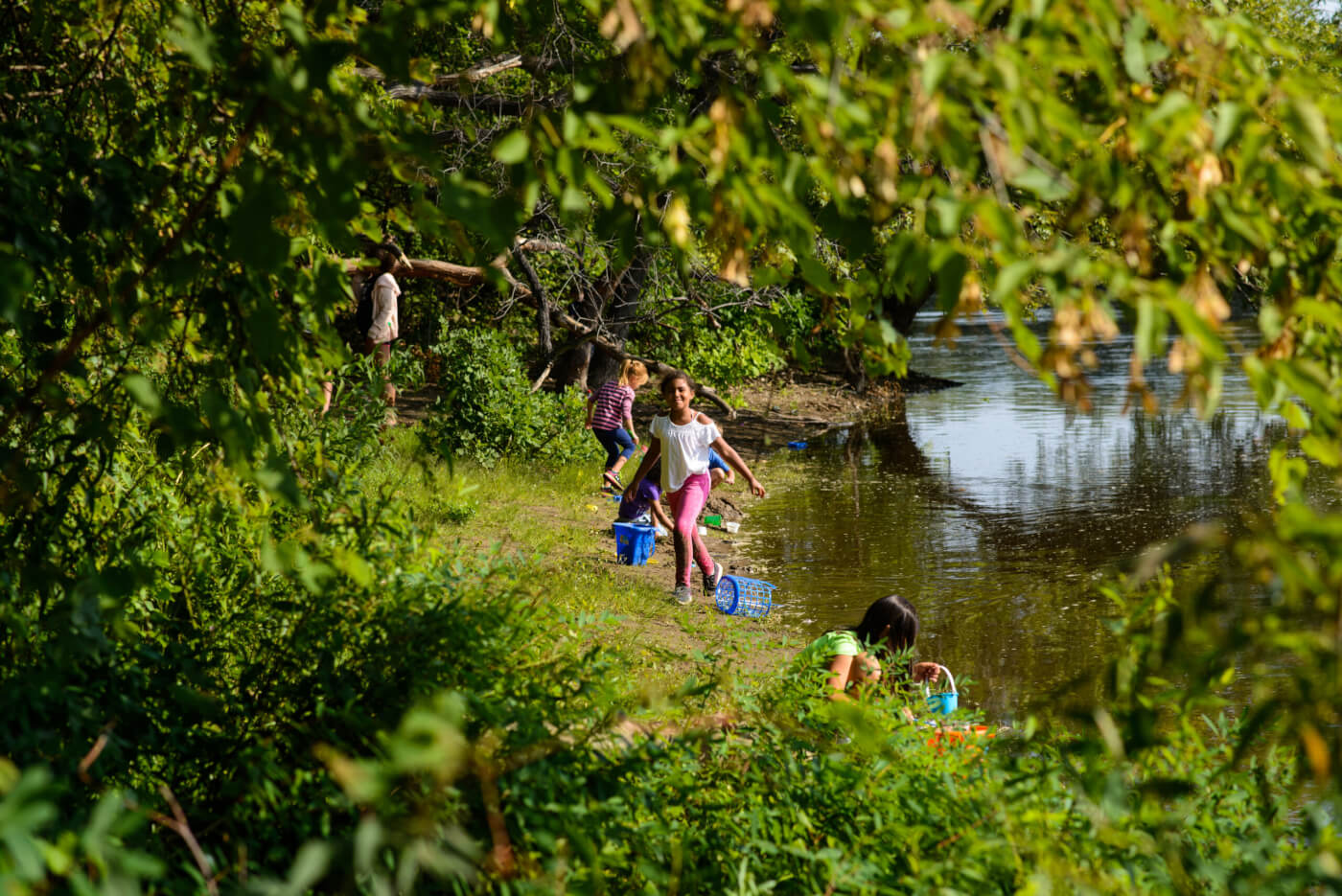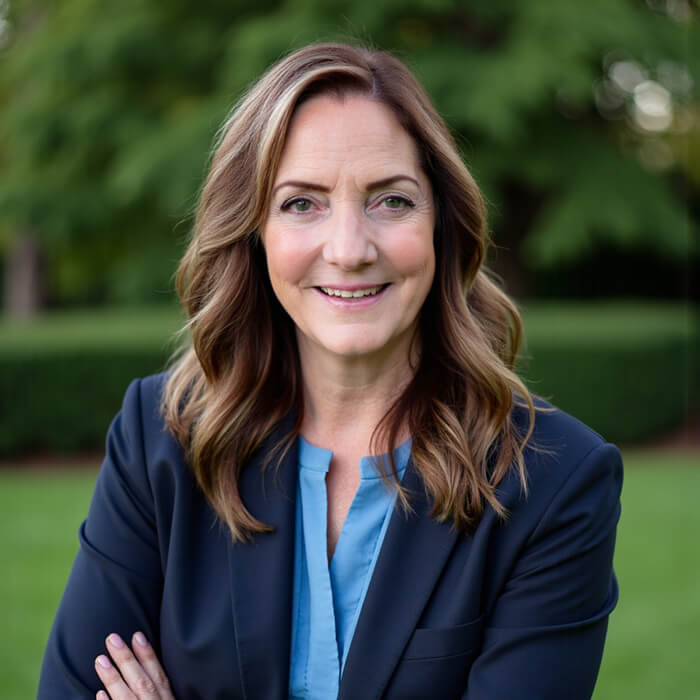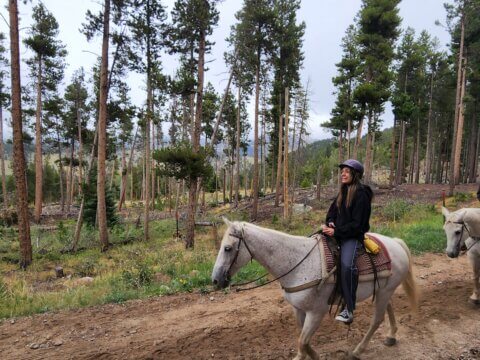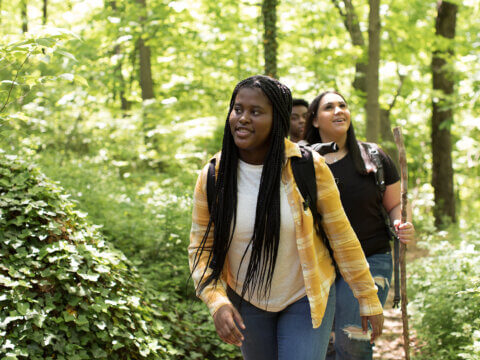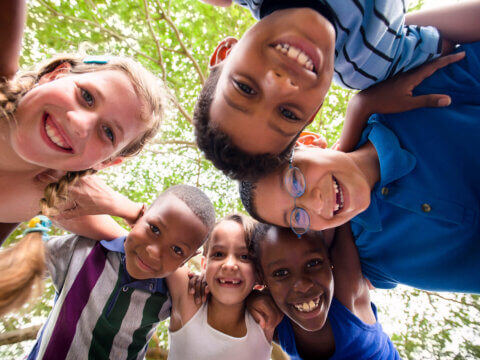Minneapolis Spotlight: The promise and possibilities of parks for youth
When Al Bangoura became superintendent of the Minneapolis Park & Recreation Board in 2019, he made it clear that his priorities were youth and youth investment.
“This goes beyond looking at parks and recreation traditionally. We need to be innovative and creative. We need to meet young people where they’re at,” says Bangoura.
Bangoura is also deeply committed to using data to close gaps in youth investments. For more than a decade, the Minneapolis Park & Recreation Board (MPRB) has used an equity-driven criteria model for prioritizing capital investments and large renovation projects. This model evaluates characteristics of both parks and the neighborhoods surrounding them, from youth population and racially concentrated areas of poverty, to the condition and age of park assets. Using this approach, MPRB has become a national leader in using equity tools to develop annual budgets — including allocations for recreation centers and programming.
The people’s parks
Minneapolis parks connect more than 30 million people each year to nature — throughout the city. With more than 7,000 acres of parkland and water, 55 miles of parkways, 102 miles of biking and walking paths, 49 recreation centers and 22 lakes, Minneapolis is consistently ranked one of the top park systems in the U.S., with 99% of residents living within a 10-minute walk of a park. Unique from most park systems, the Minneapolis Park & Recreation Board has been an independent governing body since its founding in 1883. Minneapolis residents elect nine park board commissioners every four years who then appoint a superintendent responsible for day-to-day operations and management of MPRB’s $156 million annual budget.
“Our board of commissioners is elected by the people,” says Bangoura. “Minneapolis residents — including the youngest — are the true owners of this park system. Our sole purpose is to preserve, protect and steward this incredible park system for them and with them.” Those residents are also some of the most generous park patrons in the country per capita, with 81% of the MPRB budget funded by property taxes. Additionally, individual and institutional donors have contributed nearly $47 million in support of parks since 2003 through the Minneapolis Park Foundation — an independent donor-supported nonprofit.
“Our community continues to support the Minneapolis park system with philanthropic dollars and volunteer hours because people recognize that collective support for our parks is returned in so many ways,” says Anne Hoyt Taff, Executive Director of the Minneapolis Park Foundation. “Parks serve as centers of community life, connecting us to each other and to all of the benefits of outdoor and recreational experiences.”

MPRB offers drop-in canoeing adventures and family paddles on city lakes, offering free lifejackets, canoes, instruction and more. Photo courtesy of Minneapolis Park & Recreation Board.
Investments in youth
MPRB’s engagement with its community “owners” and equity-based decision making has guided significant investments for children and youth, including plans for the complete transformation of North Commons Park, currently underway. North Commons is one of the oldest and largest parks in the city; it is located in the North Side neighborhood, which has one of the highest concentrations of young people in the state of Minnesota. Despite the impacts of discriminatory practices like redlining and decades of disinvestment, residents of this diverse and resilient neighborhood have a strong sense of place and a deep commitment to community. The $45 million project is the largest investment ever made in a neighborhood park in the 140-year history of the Minneapolis Park & Recreation Board.
“The ideas for transforming North Commons have come from young people on the North Side and their parents,” says Bangoura. “With their input, we are adding a new outdoor waterpark and a field house, plus spaces for children and teens where we will offer a whole new generation of community-driven youth development programs. It will be a neighborhood park with a regional impact that everyone on the North Side can take pride in.”
Nearby nature play
“Through extensive community engagement, we’ve heard from families of all backgrounds and abilities who understand the importance of nature play,” says Bangoura. “Families across the city expressed a strong desire for nature play areas close to their homes.” As a result, MPRB has created four nature-play areas, has six in progress, and is planning to develop 17 more.
Minneapolis also offers nature-based early childhood programs including nature play groups, preschool day camps, and a “Nature Nuts” program at the Kroening Nature Center, which also offers Campfire Nights, outdoor Family Fundays, and “Nature in the City,” an exhibit that encourages visitors to explore the natural wonders found in an urban setting,
Additionally, over the course of several years, Bangoura and his team worked to secure an additional $2.6 million annual budget allocation for youth programming — in perpetuity — from the City of Minneapolis and residential property taxes. “We were able to hire and now maintain 22 full time youth programming staff, three of whom are specifically nature focused,” says Bangoura. “But nature connection is interwoven into all of our neighborhood rec centers. You don’t have to go somewhere special and ask for it; it’s just built in. Nature connection is one of the pillars we design programming around.”

Kids enjoy a Minneapolis nature play space. Photo courtesy of Minneapolis Park & Recreation Board.
Green career pathways
Building on early nature connections, MPRB is also interested in connecting youth and young adults to meaningful green careers through Youth Employment and Training Initiatives (YETI) programs like Teen Teamworks and Minneapolis Park Corps. Teen Teamworks hires youth crews to help with park maintenance and improvements; crew members attend weekly training sessions to explore personal and professional development, financial empowerment and career readiness. The Minneapolis Park Corps, launched in 2024, provides an often overlooked age group — young adults ages 18 to 24 — with opportunities to develop job and life skills while earning income and exploring park-related careers, including natural resources and trades like carpentry.
“One thing that I’ve heard from these young adults is how much they love working outside, with caring mentors, in a beautiful park, doing meaningful work,” says Bangoura. “They are out in nature, they are learning a trade and developing real-world skills. Many of these kids go on to higher education, or they decide to change their degrees to something environmental. We know that there’s a pathway full of promise and possibilities for our youth, starting right here, in our parks.”
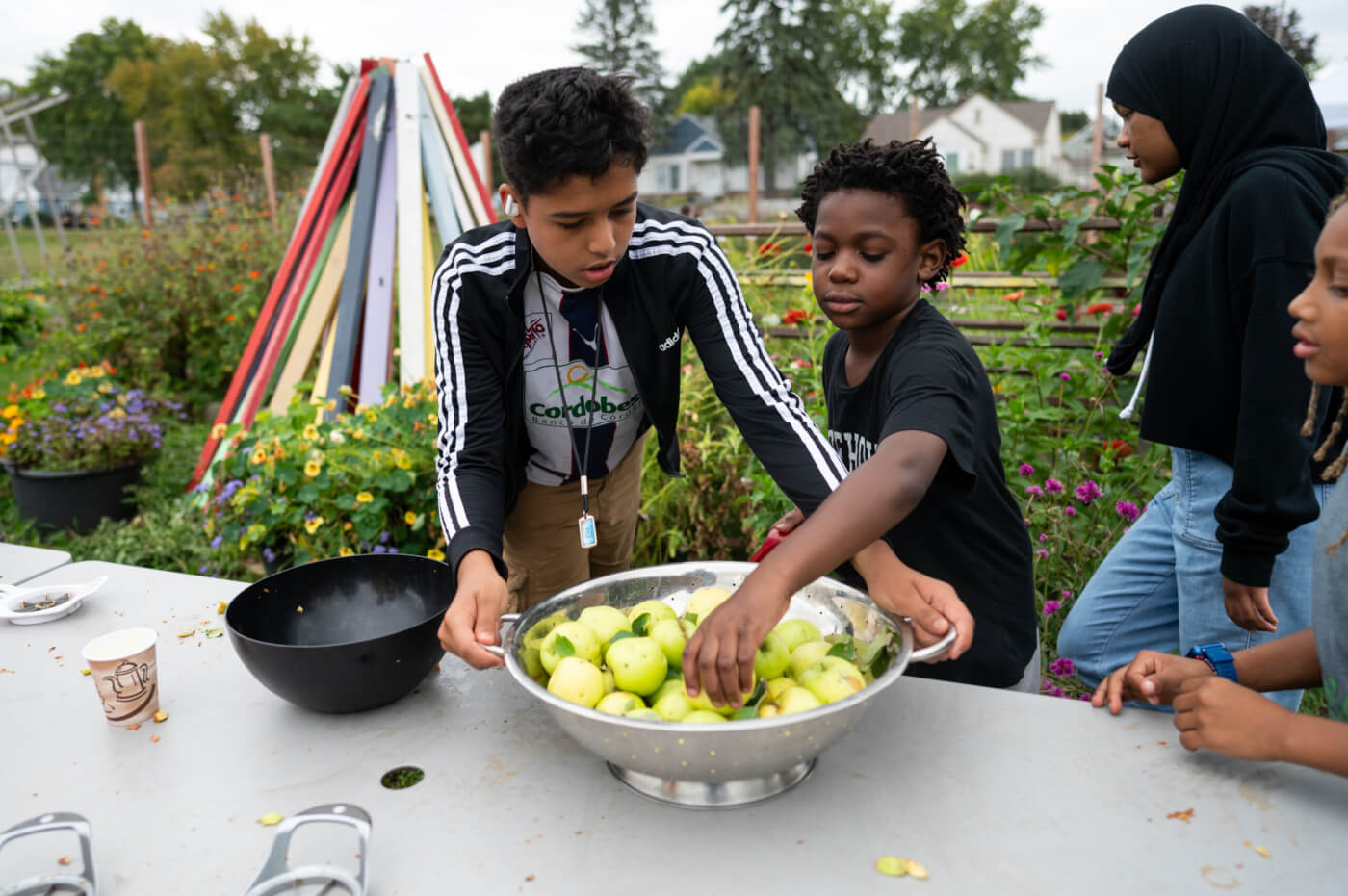
MPRB’s Black to Nature program offers family-friendly events in city parks for those that identify as Black, Indigenous and People of Color, like this apple picking event at JD Rivers’ Children’s Garden. Photo courtesy of Minneapolis Park & Recreation Board.
Editor’s Note: In 2018, Minneapolis joined a national cohort of cities working to increase children’s equitable access to the benefits of nature through Cities Connecting Children to Nature, a joint initiative of the Children & Nature Network and the National League of Cities. As part of that cohort, Minneapolis focused its efforts on nature-based approaches to youth leadership development.
Nature Activities in Minneapolis Parks
MPRB Superintendent’s Annual Reports
MPRB 2023-2026 Strategic Direction
MPRB Priority Comprehensive Plan Strategies
MPRB Parks for All: Implementing and Tracking
Facebook: Eloise Butler Wildflower Garden and Bird Sanctuary
Facebook: Kroening Nature Center
Advancing equity in children’s connections to nature, Children & Nature Network
Early Childhood Nature Connections Toolkit, Children & Nature Network
-
Network News
POLICY UPDATE: Policy and advocacy for the children and nature movement
-
Voices
Binoculars, bald eagles and my journey as a Black birder
-
Richard Louv
THE WONDER BOWL: Ten Spring and Summer Nature Activities for Kids and Adults
-
Network News
Minneapolis Spotlight: The promise and possibilities of parks for youth
-
Voices
Why nature is my motherhood ally


